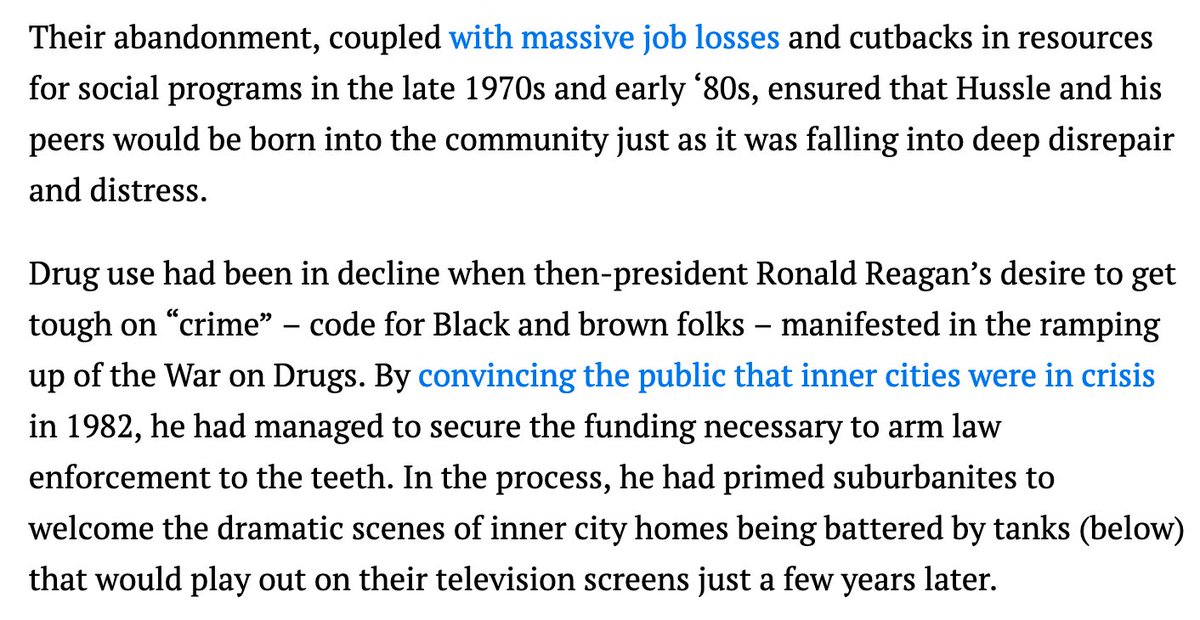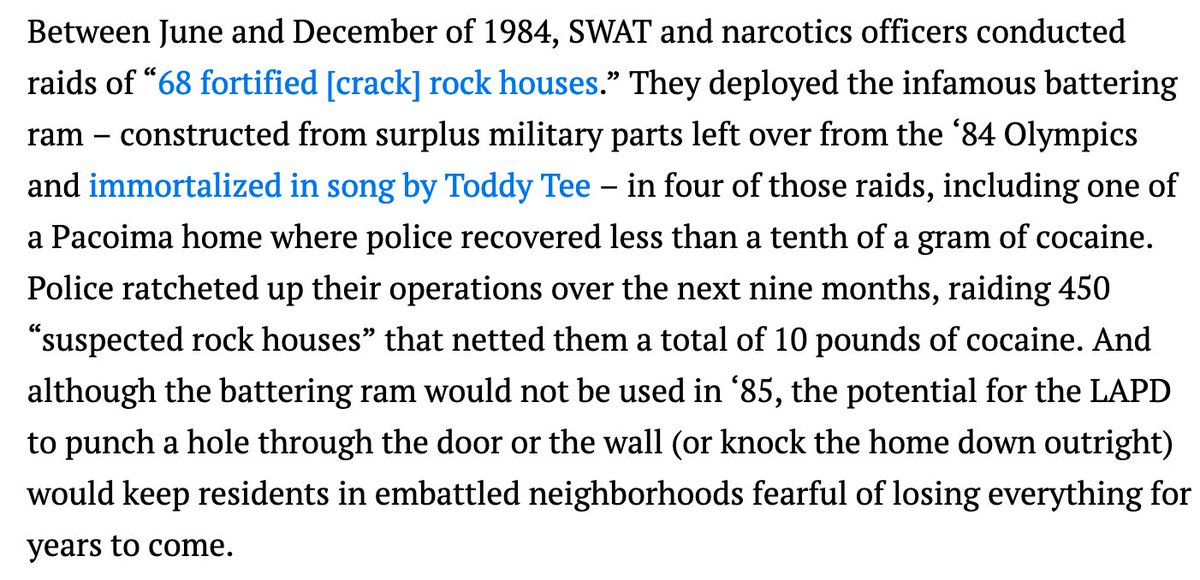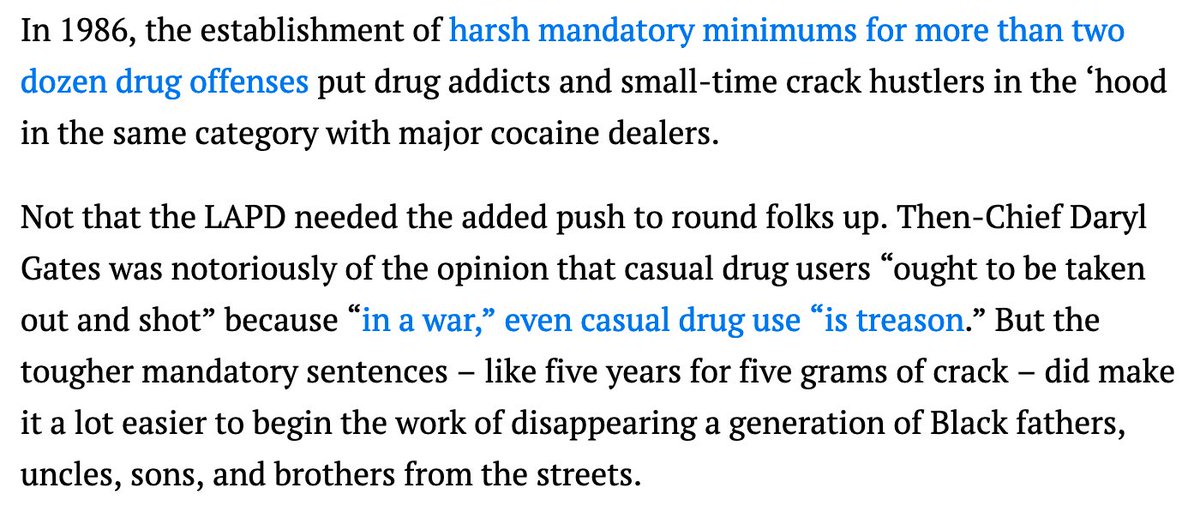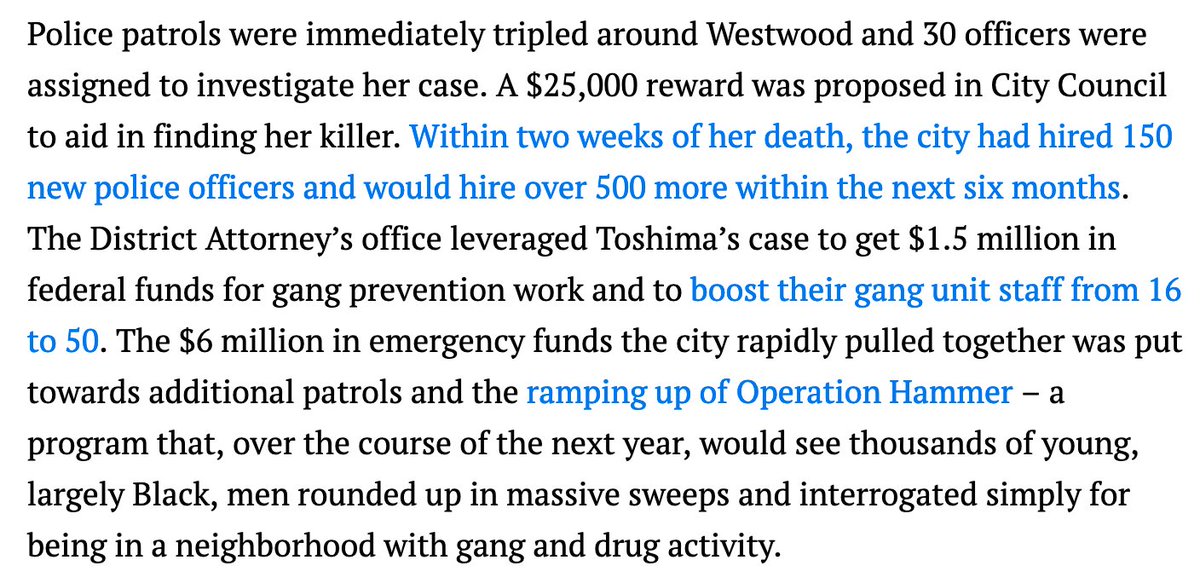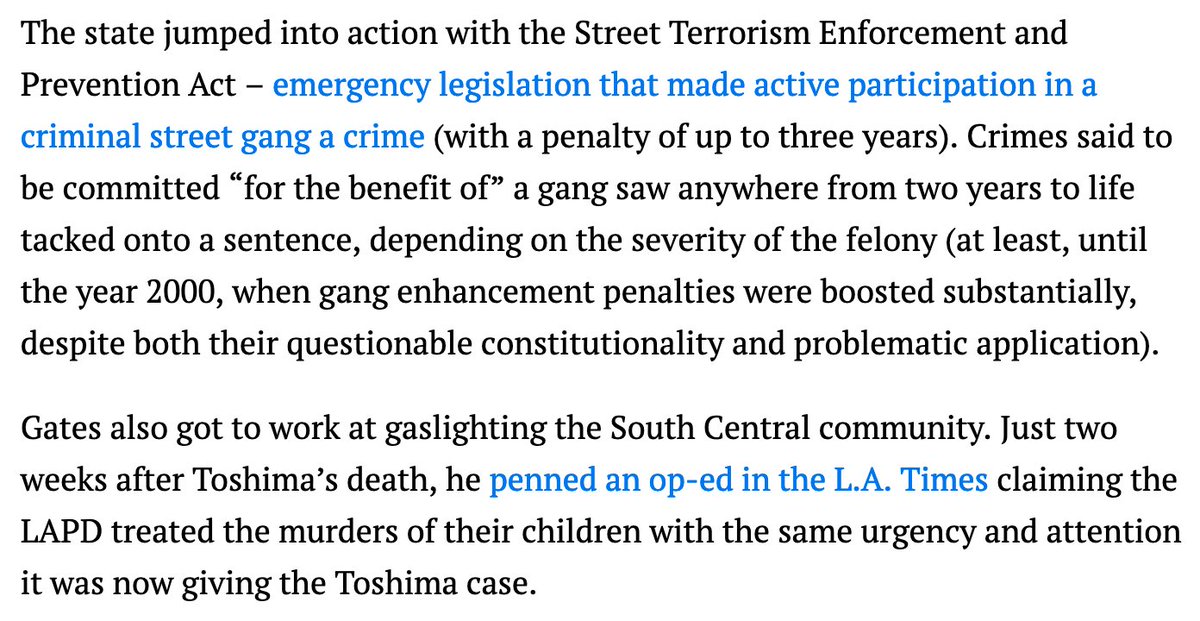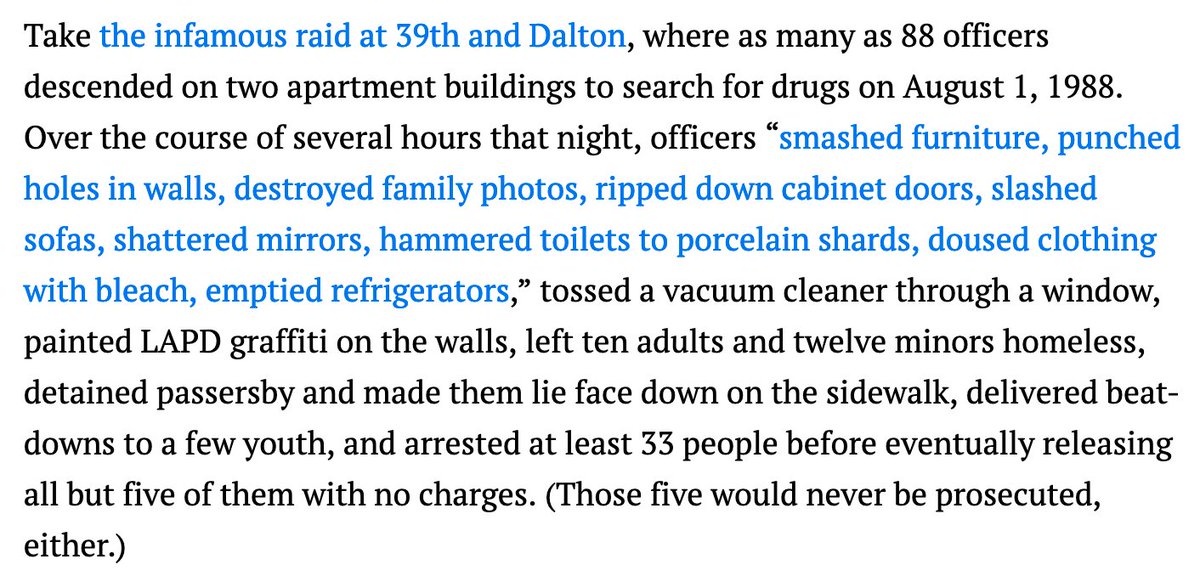I get the point...but am also dreading how many urbanists RTs this essay will get and how it will be wielded against BIPoC planning folks making more nuanced arguments https://www.latimes.com/opinion/story/2020-06-24/bulldoze-la-freeways-racism-monument
I wrote about this, too, in my deep dive into the history of South Central via the story of #NipseyHussle https://la.streetsblog.org/2019/08/15/nipsey-hussle-understood-cities-better-than-you-why-didnt-you-know-who-he-was/
I even had maps (!) showing how freeways had been used to wall communities off and contain populations once covenants were struck down!
But what made the physical boundaries so formidable was all of the other stuff that undermined their communities in the process. And, of course, policing.
Police had essentially been able to use the 10 as a boundary, containing the community for decades. When a young woman was shot in Westwood - evidence that that containment had failed - that's when the hammer came down. https://twitter.com/sahrasulaiman/status/1124060668741681152
Operation Hammer, launched a year earlier, now came into its own https://twitter.com/sahrasulaiman/status/1124062572641234955
Toshima's death was leveraged in incredible ways...all to reestablish containment of folks south of the 10.
Westwood would do its part by being hostile to Black youth https://twitter.com/sahrasulaiman/status/1124064766035660805
And LAPD would play its role by terrorizing South Central residents, like with the infamous raid at 39th and Dalton
There's more, but the larger point (again, to urbanist folks) is that social/economic/cultural/racial landscapes are inextricably intertwined with the physical ones... they are not independent of each other.
Meaning that ripping a freeway out does not automatically qualify as anti-racist policy.
*ducks*
*ducks*
If you're not also engaging the legacy of disenfranchisement that those freeways helped deepen, then you have to ask what's been resolved.
Namely, law enforcement has been the ones deployed throughout history to police the mobility of Black and brown folks, whatever the built environment. They can and will continue to do that if a freeway gets ripped out.
I just did a kind of case study of what that looks like in practice yesterday, actually https://la.streetsblog.org/2020/06/23/how-beating-of-unhoused-boyle-heights-man-exposes-woeful-inadequacy-of-lapd-reform-proposals/
But my larger point is that this is a moment where a wide range of folks are finally taking up questions of how race and racism shaped cities. And it's time for urbanism to go beyond the lens of the built environment to the deprivations and privileges built upon/embedded in it.
Anyways. Gonna post below some dives into how these things all intersect. First up: a deep dive into the history of South Central and how the quest to uphold white comfort north of the 10 meant aggressive repression of Nipsey's community. https://la.streetsblog.org/2019/08/15/nipsey-hussle-understood-cities-better-than-you-why-didnt-you-know-who-he-was/
The story behind #DestinationCrenshaw - an effort to turn yet another infrastructure project dividing the community into an opportunity to reclaim space for unapologetic Blackness https://la.streetsblog.org/2019/02/08/destination-crenshaw-and-the-rise-of-we-built-this-place-making/
A dive into the history of a corridor worst hit by the unrest of '92 and least recovered - and how a developer was able to hold the community hostage to blight for decades. https://la.streetsblog.org/2018/10/16/vermontmanchester-reckoning-with-the-past-and-wrestling-with-the-form-change-should-take/
How disenfranchisement and generational trauma manifest on an individual level... the story of a friend who was struggling to stay housed. https://la.streetsblog.org/2018/09/07/as-l-a-ramps-up-efforts-to-get-people-off-the-streets-a-young-man-struggles-to-stay-housed/
The extent to which our planning processes do not allow for the contemplation of the costs disenfranchisement and disinvestment have imposed upon lower-income communities of color https://la.streetsblog.org/2016/11/22/what-constitutes-good-development-luxury-reef-project-approved-over-south-central-residents-fears-of-displacement/
OK, fine. A story specifically about freeways. https://la.streetsblog.org/2015/10/02/new-documentary-about-boyle-heights-opens-new-urbanism-film-festival/
Placemaking https://la.streetsblog.org/2017/06/27/ancestors-v-polka-dots-some-thoughts-on-approaches-to-place-making/
Disinvestment and white flight https://la.streetsblog.org/2017/07/28/the-baldwin-hills-crenshaw-plaza-project-offers-window-into-history-of-redevelopment-legacy-of-white-flight/
And finally two on what it means when access to the public space is fraught because the streets are contested https://la.streetsblog.org/2013/11/06/death-and-all-his-friends-cast-long-shadows-when-they-make-regular-appearances-in-the-public-space/
Translating this for a planning audience: Youth in Watts describe the lengths they go to to feel safe in the streets https://la.streetsblog.org/2014/03/21/to-be-or-not-to-be-a-gang-banger-is-that-really-the-question/
Finally, finally, the conversation we had with Richard Rothstein/The Color of Law and how we learned that, despite dedicating years to the study of segregation, he didn't see/understand the value of the concept of white privilege. https://la.streetsblog.org/2017/09/28/america-walks-walking-toward-justice-series-the-color-of-law-and-residential-segregation/

 Read on Twitter
Read on Twitter


